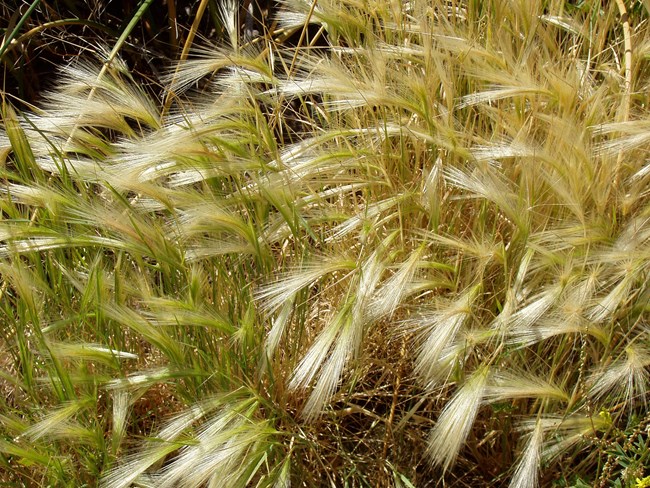
Grasses grow throughout Montzuma Castle National Monument. Individual grasses sprout almost anywhere there is soil. Grasslands form in areas where wind-blown sediment and erosion have created a layer of soil that is several feet thick. Most desert grasses can be placed in one of two groups: bunch and sod-forming. Bunch grasses are classic desert plants that occur in scattered clumps, which is a growth pattern that reduces competition for limited soil nutrients and water. Indian ricegrass and needlegrasses are bunch grasses. The relatively large ricegrass seeds are rich in protein and were an important source of food for Native Americans. Needlegrass has a sharp seed attached to a wound "thread" that drives the seed into the ground as it unwinds. Both of these grasses are perennial, becoming dormant during droughts. Ricegrass plants have been known to live over 100 years. Sod-forming grasses are what most people have in their lawns. Galleta and blue grama are sod-forming perennials native to Montezuma Castle and usually grow together. Unlike most desert grasses, galleta can withstand heavy grazing and is important forage for bighorn sheep and mule deer. The seedhead of the blue grama looks like eyelashes. Select a Park:Select a Species Category (optional):
Search results will be displayed here.
|
Last updated: November 16, 2025
